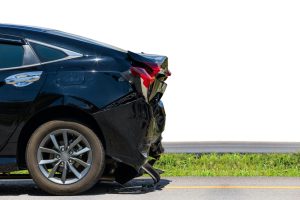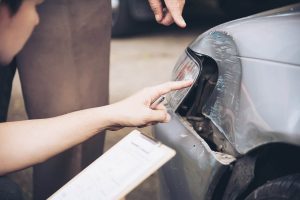What is the Hit and Run Investigation Process? Steps to Take to Help the Investigation Process

Leaving the scene of an accident is a crime, which unfortunately happens more often than you may think. AAA reports that more than 700,000 hit and run accidents occur each year across the United States, with tens of thousands resulting in injuries and at least 1,500 fatalities.
The police’s hit and run investigation process begins with an officer arriving at the scene of the accident to focus on the available facts. They will gather evidence including witness statements, victim statements, photographs of the scene, and any other available evidence such as video footage.
But what can you do to aid in the investigation process?
Victims of a hit and run face not only the pain and difficulty of an injury but also the frightening uncertainty of not knowing who owes them compensation or even if they can collect.
You may think you have no choice but to absorb some or all of the costs of medical bills, property damage, and the overall pain and suffering of an injury because the person who hit you is nowhere to be found.
Hit-and-run victims sometimes carry uninsured motorist (UM) insurance that is designed to give them financial relief. But even those victims can face difficulty, because insurance companies do not always play ball in paying out UM claims.
If you have recently been a victim of a hit and run, you may feel overwhelmed by not knowing how you will pay for your injuries and losses, or who you can pursue for compensation. Below we provide information that can answer the questions you may have.
For a free consultation with a car accident lawyer to get answers to your specific questions, contact us today at the Bryant Law Center.
Types of Hit-and-Run Accidents
The term “hit and run accident” broadly refers to any car accident in which a vehicle hits something or someone and its driver
- Fails to stop at the scene altogether;
- Stops but fails to give identifying information (or gives false information) to the victim, and then leaves the scene; or
- Stops but fails to render assistance as required by law, and then leaves the scene.
Hit and run drivers have lots of (mostly bad) reasons for their actions.
Some fear arrest and jail time for driving under the influence. Some worry the crash will boost their insurance premiums, or that they do not have enough (or any) insurance to cover the damage they caused. Some just lack a moral compass. And yes, a few simply do not realize their vehicle struck someone or something.
We often think of a hit and run as a crash in which one vehicle hits another while both are in motion. However, there is more to a hit and run than two-car collisions.
A driver can also commit a hit and run by striking a parked car in a parking lot, a pedestrian, a cyclist, or a property feature like a fence or a mailbox.
Hit and runs can happen without a victim suffering any bodily injury at all, with only minor injuries, or with a victim sustaining serious injuries or fatal injuries.
The law of the state where the accident happens dictates what the driver must do in just about any accident scenario. Virtually always, the law requires drivers to stop, provide information such as contact and insurance information, and render reasonable assistance.
Failing to do what is required by law, and then leaving the scene of any accident, amounts to a “hit and run” and subjects the driver to potentially serious criminal and civil penalties.
Drivers who leave the scene of a crash that results in serious or fatal injuries face the harshest potential consequences.
How to Aid in the Investigation Process

Because a hit and run is a crime, these accidents typically trigger official investigations by law enforcement.
For you, the victim, that is a good thing. The “long arm of the law” can investigate and track down a hit and run driver for their crimes far more effectively and efficiently than any private citizen can, in most cases. And, by finding the hit and run driver for you, law enforcement helps to ensure you have as good a chance as possible to obtain compensation for your injuries and losses.
To help that investigation, hit and run victims may benefit from following the tips below.
Call the Police
An investigation will not happen if the police have not been notified of the hit and run.
So, always call 911 to report any hit and run they need to investigate, whether it involves two vehicles, one vehicle, or no vehicle, and whether it features victims with minor injuries, severe or fatal injuries, or no physical injuries at all.
Any hit and run case is likely a crime that needs investigating, and so the police need to know about it. Plus, by reporting the hit and run to the police, you ensure the police officer will write a report documenting it, which can be important in the future if you need to take legal action for damages or file an insurance claim.
Gather Evidence, If You Can
This tip applies only if you can follow it safely and without putting yourself or others at risk of harm.
If you can, use your cell phone to take pictures at the scene of any auto accident as soon as possible after it occurs, especially if the other driver has not yet fled the scene.
Try to get images of the other vehicle’s license plate number, make and model, and any other identifying of it or its driver.
If the hit and run driver left before you had a chance to snap pictures, take photos of any damage, the car accident scene, and its surroundings. Offer all evidence you gather at the scene of the accident to law enforcement for their police report.
Gather Information About the Driver From Any Eyewitnesses
Eyewitnesses can be valuable to the hit and run investigation process, especially if you were knocked unconscious or trapped in your vehicle. Witnesses don’t always get all the details right, but they can often provide enough detail to give law enforcement a place to start.
After a car accident, if you are physically able, gather information from any eyewitnesses.
Ask for their name and contact information including their phone number, and take down their vehicle information if applicable. There is a chance the eyewitnesses might need to leave before police arrives on the scene.
If you have their info, the police, your insurance company, and your lawyer can speak with them to get their statements, but you should ask them to write down their statement for you right away.
Check the area for any security cameras or traffic cameras; they may have recorded the hit and run. Surveillance cameras and surveillance footage can provide important information to track down the at fault driver for their crimes.
Notify Your Insurance Company
It can often help to put your own (usually auto or homeowner’s) insurance company on notice of the hit and run. You may even have an obligation to put the insurer on notice in order to preserve your rights to coverage, especially if you carry UM insurance or underinsured motorists coverage.
In talking to your own insurance provider, stick to the facts, and just the facts. Do not get into an extended discussion about fault. Just tell them what happened, and if their questions start to seem intrusive, talk to your lawyer before continuing.
Consult with an Attorney
After a hit and run accident, you should deeply consider consulting with an attorney at The Bryant Law Center about your options for compensation. Without the help of an attorney, you are left to your own devices for pursuing your claim.
An attorney will be able to provide legal advice, help you compile information about the hit and run, aid law enforcement in their investigation on your behalf, and will help you put together your case based upon your unique circumstances.
No one should have to face down the uncertainty of pursuing a hit and run claim without a lawyers help. An attorney can help you maximize your compensation for your injuries and any damages. They will be able to advise you throughout the entire process whether that means dealing with the police, insurance companies, or the responsible party.
Compensation For Your Hit and Run Damages

Your legal rights to compensation for your hit and run damages will depend in part on what happens next.
On one hand, if you or an eyewitness were able to provide useful information for law enforcement, then you may not need to wait long before you know the identity of the driver who hit you.
On the other hand, the police may come up empty and you may never know the perpetrator’s identity.
In either event, your safest bet in the aftermath of a hit and run crash is to contact The Bryant Law Center and seek the advice of an experienced hit and run personal injury attorney who can guide you through your options to put you in the best possible position to obtain maximum compensation.
Depending on your unique circumstances, an attorney may:
- Offer assistance to law enforcement
- File a legal action
- Pursue an uninsured motorist claim
- Manage your legal efforts for compensation
Your lawyer may offer assistance to law enforcement in its investigation of the hit and run driver, such as by sharing any evidence you gathered or offering to collect additional information that the police do not have the resources or willingness to track down.
An attorney can file a legal action against the hit and run driver or another party responsible for the driver’s conduct. They will seek compensation and money damages on your behalf.
Your attorney may pursue an uninsured or underinsured motorist claim against your own insurance provider if police cannot identify the driver or the driver turns out not to have insurance.
Your attorney will manage any legal effort you pursue for compensation in coordination with any prosecution of the hit and run driver by the authorities. Your rights to compensation do not depend on whether the driver is charged or convicted, but the criminal process can affect the strategy your lawyer develops for seeking money on your behalf.
Contact The Bryant Law Center After a Hit and Run Accident
The nationally recognized attorneys at Bryant Law Center have the knowledge and resources to help you hold a hit and run driver and others accountable for the harm you suffered.
Our commitment to client advocacy and seeking justice has led to the recovery of millions of dollars for our clients.
We understand the costs and difficulties that hit and run victims face, and we’re here to help. Contact Bryant Law Center online today using the form below or at 270-908-0995 for a free consultation to discuss the events leading up to and following your hit and run accident, your injuries, and the ways we may help you recover the compensation you deserve.
